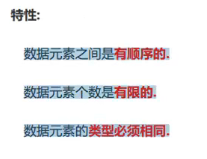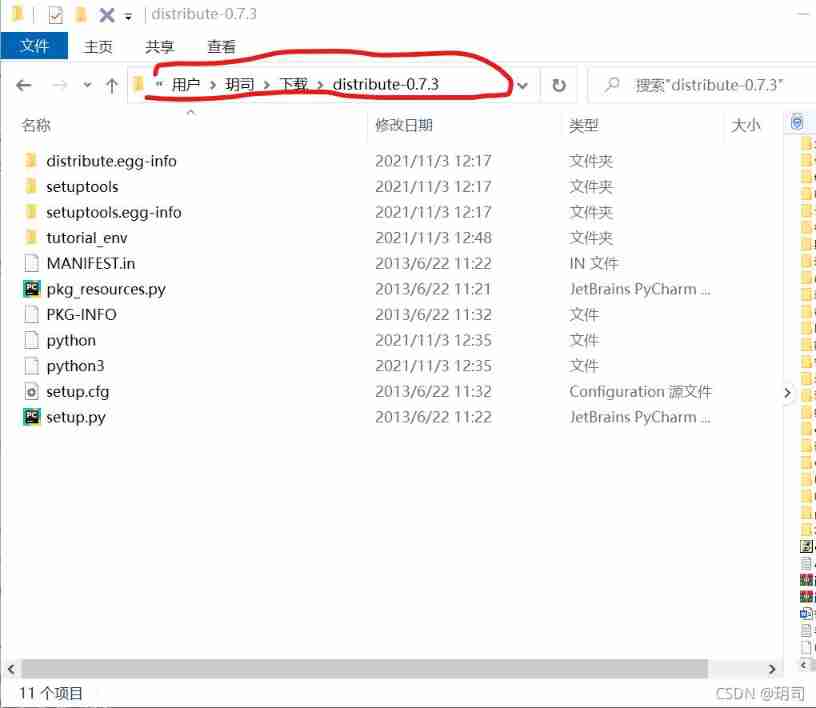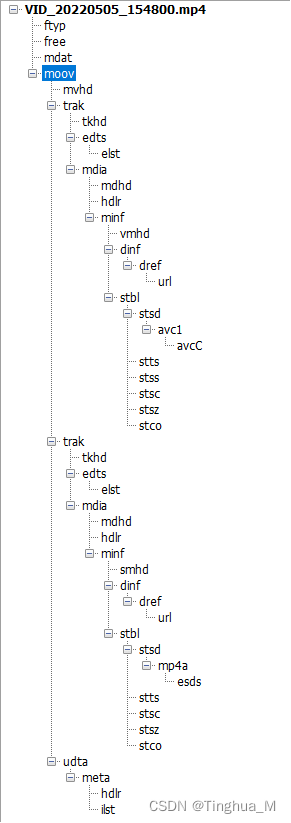package cn.daheww.demo.juc.reentrylock;
import sun.misc.Unsafe;
import java.lang.reflect.Field;
import java.util.concurrent.locks.LockSupport;
/**
* @author daheww
* @date 2022/7/7
*/
public class MiniReentryLock implements Lock {
/**
* What's the lock --> resources --> state
* 0 --> Unlocked
* >0 -> Lock
*/
private volatile int state;
/**
* Exclusive mode
* Only one thread can hold a lock at a time , Other threads will be blocked when they do not acquire the lock
*
* Thread that currently owns the lock ( Thread occupying lock )
*/
private Thread exclusiveOwnerThread;
/**
* Two nodes are needed to maintain the blocking queue
* Head Point to the head node of the queue
* Tail Point to the end of the queue
*
* A special :Head The thread corresponding to the node is the thread currently occupying the lock
*/
private Node head;
private Node tail;
/**
* Get the lock
* Suppose the current lock is occupied , Will block the caller thread , Until it grabs the lock
*
* Simulate fair lock
* --> first come , first served
*
* lock The process of
* scene 1. After the thread came in, it found , At present state == 0 --> Go ahead and grab the lock
* scene 2. After the thread came in, it found , At present state > 0 --> Queue the current thread
*/
@Override
public void lock() {
// The first time a lock is obtained , take state Set to 1
// The first n Second reentry , take state Set to n
acquire(1);
}
@Override
public void unlock() {
release(1);
}
private void release(int arg) {
// Conditions established : This indicates that the thread has completely released the lock
if (tryRelease(arg)) {
// Blocking the queue , And the thread of sleeping , You should wake up a thread
// First of all, we need to know whether there is any waiting node --> head.next == null
Node head = this.head;
if (head.nx != null) {
// Fair lock , Wake up the head.nx node
unparkSuccessor(head);
}
}
}
private void unparkSuccessor(Node node) {
Node s = node.nx;
if (s != null && s.thread != null) {
LockSupport.unpark(s.thread);
}
}
/**
* If the lock is released successfully, it returns true
*/
private boolean tryRelease(int arg) {
int c = getState() - arg;
if (getExclusiveOwnerThread() != Thread.currentThread()) {
throw new RuntimeException("must get lock first");
}
// So if I go here , There is no concurrency , Only one thread will come here
// Conditions established , It indicates that the current thread holds lock The lock has been completely released
if (c == 0) {
this.exclusiveOwnerThread = null;
this.state = c;
return true;
} else {
this.state = c;
return false;
}
}
/**
* Compete for resources
* 1. Attempt to acquire lock . Success will occupy the lock , And return to
* 2. Failed to seize the lock , Block the current thread
* @param arg
*/
private void acquire(int arg) {
if (!tryAcquire(arg)) {
// Lock snatch failed
// step1. Encapsulate the current thread as node, Join the blocking queue
Node node = addWaiter();
// step2. Current thread park, Put the thread in a suspended state
acquireQueued(node, arg);
}
// Successful lock snatching
// 1. Got the lock
// 2. Re entered the lock
}
/**
* The attempt to grab the lock failed , What needs to be done :
* 1. The current thread needs to be encapsulated as node, Join the blocking queue
* 2. The current thread needs to be park, Put the thread in a suspended state
*
* Wake up process :
* 1. Check current node Is it head.next node
* head.next It is a thread with preemptive permission , Other node There is no preemptive permission
* 2. preemption :
* success :
* 1. Will the current node Set to node, Will the old head Out of the team , Go back to the business level
* 2. continue park Waiting to be awakened
*
* ----------------------------------------------
* 1. Logic added to the blocking queue addWaiter()
* 2. The logic of competing for resources acquireQueued()
*/
private void acquireQueued(Node node, int arg) {
// The current thread has been put into queue It's in
// Only current node The spin will not jump out until the lock is successfully obtained
for (; ; ) {
// Under what circumstances , At present node After being awakened, you can try to get the lock ?
// There is only one case , At present node yes head Successor node , That's the right
// It's not just first come, first served
Node pvNode = node.pv;
// Conditions 1:pvNode == head
// true --> Show the current node Have preemptive permission
// queue The first node in represents the thread currently executing the lock --> head Thread to point to
// head The following thread represents the thread that is queuing --> So only head.nx The node has the right to rob the lock
// Conditions 2:tryAcquire(arg)
// true --> The current thread has acquired the lock
//
if (pvNode == head && tryAcquire(arg)) {
// Entering this indicates that the current thread has successfully competed for the lock
// What to do :
// 1. Set up current head For the current thread node
// 2. Assist the original object to leave the team
setHead(node);
pvNode.nx = null;
// Because I got the lock , So I return 了
return;
}
// Not at present head.nx node , Or the attempt to acquire the lock fails , At this time, you need to put the current thread park fall
System.out.println(" Threads :" + Thread.currentThread().getName() + " Hang up ");
LockSupport.park();
// Until a thread does the current thread unPark operation , This thread will continue to execute
/*
So to summarize ,lock The logic of :
1. Without a lock , If a thread calls lock Method , It will change lock Medium state value . here state The value will not be 0 了 .
Then other threads call lock When the method is used , You'll see this state Not for 0.
2. Then the thread will be encapsulated into a node node
3. Then I will try to compete for the lock , Do the final rescue work , If it can't be saved , Just park 了
--> The thread is right here lock Of lock() The method is blocked . The lock effect is achieved
--> All calls to this lock object lock Only one thread can continue to execute the method of , Then other threads will be blocked , Until this thread has done unlock operation
*/
System.out.println(" Threads :" + Thread.currentThread().getName() + " Wake up the ");
// When to wake up by park The thread of ?--> unlock()
}
}
/**
* Queue the current thread
* Returns the... Corresponding to the current thread node node
*
* addWaiter After execution , Ensure that the current thread has been queued successfully
*/
private Node addWaiter() {
Node newNode = new Node(Thread.currentThread());
// How to join the team ?
// Case1. At present node Not the first one to join the team node, The queue already has waiting node 了
// 1. find newNode Of pv node
// 2. to update newNode.pvNode = pv node
// 3.CAS to update tail by newNode
// 4. to update pv node
Node pvNode = tail;
if (pvNode != null) {
newNode.pv = pvNode;
// Conditions established , Indicates that the current thread has been successfully queued
if (compareAndSetTail(pvNode, newNode)) {
pvNode.nx = newNode;
return newNode;
}
}
// Several cases of implementation here
// 1.tail == null The queue is empty
// 2.cas Set up current newNode by tail It failed --> Cycle into the team --> The spin
enq(newNode);
return newNode;
}
/**
* Spin into the team , Return only after success
* 1.tail == null The queue is empty
* 2.cas Set up current newNode by tail It failed
*/
private void enq(Node node) {
for (; ; ) {
// Case one : The queue is empty
// --> The current thread is the first thread to preempt the lock ...
// The thread currently holding the lock , Nothing has been set node, So as the first driver node of this thread
// Need to wipe his ass
// Add a to the thread that currently holds the lock node As head node
// head The node represents the thread currently occupying the lock at any time
if (tail == null) {
// Conditions established : It indicates that the current thread supplements the thread that currently holds the lock head Operation succeeded
if (compareAndSetHead(new Node())) {
tail = head;
// Be careful , There was no direct return , But will continue to spin
}
} else {
// There are already node 了 , It shows that this is an addition node The process of
// How to join the team ?
// 1. find newNode Of pv node --> Abreast of the times tail node
// 2. to update newNode.pvNode = pv node
// 3.CAS to update tail by newNode
// 4. to update pv node
Node pvNode = tail;
node.pv = pvNode;
// Conditions established , Indicates that the current thread has been successfully queued
if (compareAndSetTail(pvNode, node)) {
pvNode.nx = node;
return;
}
}
}
}
/**
* Attempt to acquire lock , It doesn't block threads
* true --> Seize success
* false --> Preemption failed
*/
private boolean tryAcquire(int arg) {
if (state == 0) {
// At present state by 0
// You can't grab the lock directly --> Fair lock --> first come , first served
// Conditions for a :!hasQueuedPredecessors() ---> After taking the reverse, it is true, Indicates that there is no waiting thread in front of the current thread
// Condition 2 :compareAndSetState(0, arg) -> Use cas Why :lock Methods may be called by multiple threads
// true --> The current thread successfully grabs the lock
// (1) volatile --> state By volatile Modify the , So other threads can know at the first time that this value is not 0 了 --> The cache can be consistent
// (2) cas -------> state from 0 Turn into arg The operation of cas Realization , Used to ensure that only one thread can change state Value (0->arg) --> Only one thread can perform the next operation --> lock
// 1. If cas Variables of do not volatile Modification is meaningless :
// because A The thread has changed state Value , however B Threads don't know
// ( visibility ,volatile Will make B The copy in the thread will expire immediately , Then get the latest state Value , here B In the thread workspace state The value is not 0 了 )
// 2. If volatile Variables of do not cas To change its value , It doesn't make sense :
//· step1.A Threads ,B Threads are all got state Copy information for , here state The value is 0
// step2.A The thread has changed state Value .B The thread is still writing , because state The value of , therefore B In the thread workspace state Value change , then B Keep writing .
// So all judgments state The value is 0 All threads can write successfully , And can perform subsequent operations after successful writing
// So want to use cas+volatile To ensure that only one thread can write this value successfully
// Ps. You can see , If the values that these threads want to write are the same , Write a few more times , But the result is consistent with writing only once
// cas+volatile The main thing is to control that the operation after a successful write will only be performed once , It's like a lock
if (!hasQueuedPredecessors() && compareAndSetState(0, arg)) {
// Successful lock snatching
// 1. take exclusiveOwnerThread Set as current thread
this.exclusiveOwnerThread = Thread.currentThread();
return true;
// Will not join any node, Return to true
// Next, the first thread that fails to compete will help create a node, Then perform subsequent operations
}
// There is a thread waiting in front of the current thread || Multiple threads are trying to acquire this lock together with the current thread , Then the current thread fails --> return false;
} else if (Thread.currentThread() == this.exclusiveOwnerThread) {
// Timing of execution :
// 1. The current lock is occupied
// 2. The current thread is the lock thread
// There is no concurrency . Only the currently locked thread has permission to modify state
// Even if the same thread enters here many times , Set up state Value , Then they all use the same workspace
// There are no different workspaces , This value is different ( Because there is no cache )
// Lock reentry process
int c = getState();
c += arg;
// TODO Cross border judgment
this.state = c;
return true;
}
// When will it return false?
// 1.cas Locking failed
// 2.state Greater than 0, And the current thread is not a lock thread
return false;
}
/**
* Whether there is a waiting thread in front of the current thread
* true --> There is a waiting thread in front of the current thread
* false -> There are no other waiting threads in front of the current thread
*
* Call chain
* lock --> acquire -> tryAcquire -> hasQueuedPredecessors(state The value is 0 when , At present lock It is in an ownerless state )
*
* When to return false?
* 1. The current queue is empty
* 2. The current thread is head.next node --> head.next Have the right to fight for at any time lock
*/
private boolean hasQueuedPredecessors() {
Node h = head;
Node t = tail;
Node s;
// Conditions for a :h != t
// true --> The current queue already has node 了
// false -> h == t
// case1. h == t == null --> Not initialized yet queue
// case2. h == t == head
// The first thread that fails to acquire a lock will create a new one for the thread that currently holds the lock head node
// Condition 2 :
// precondition : Condition one holds
// Exclude several situations :
// Conditions 2.1: In extreme cases --> The first thread that failed to acquire the lock , It will be added to the lock thread head node , Then join the team in spin
// step1.cas Set up tail succeed
// step2.head.next = node
// In the middle of these two steps , There are threads to check whether there are waiting threads in front
// This situation should return true: There has been a head.next The node , When other threads come here, they need to return true
// Conditions 2.2:
// precondition :h.next No null
// true --> If the condition is true, it means that the current thread is the thread holding the lock
// false -> This indicates that the current thread is h.next The thread corresponding to the node , Need to return false. Then the thread will compete for the lock
return h != t && ((s = h.nx) == null || s.thread != Thread.currentThread());
}
private static final Unsafe UNSAFE;
private static final long STATE_OFFSET;
private static final long HEAD_OFFSET;
private static final long TAIL_OFFSET;
static {
try {
Field f = Unsafe.class.getDeclaredField("theUnsafe");
f.setAccessible(true);
UNSAFE = (Unsafe) f.get(null);
STATE_OFFSET = UNSAFE.objectFieldOffset(MiniReentryLock.class.getDeclaredField("state"));
HEAD_OFFSET = UNSAFE.objectFieldOffset(MiniReentryLock.class.getDeclaredField("head"));
TAIL_OFFSET = UNSAFE.objectFieldOffset(MiniReentryLock.class.getDeclaredField("tail"));
} catch (Exception e) {
throw new Error(e);
}
}
private boolean compareAndSetHead(Node update) {
return UNSAFE.compareAndSwapObject(this, HEAD_OFFSET, null, update);
}
private boolean compareAndSetTail(Node expect, Node update) {
return UNSAFE.compareAndSwapObject(this, TAIL_OFFSET, expect, update);
}
private boolean compareAndSetState(int expect, int update) {
return UNSAFE.compareAndSwapInt(this, STATE_OFFSET, expect, update);
}
/**
* Blocked threads are encapsulated as node node , And then put in FIFO queue
*/
static final class Node {
/**
* Encapsulated thread itself
*/
Thread thread;
/**
* Front node reference
*/
Node pv;
/**
* Post node reference
*/
Node nx;
public Node(Thread thread) {
this.thread = thread;
}
public Node() {
}
}
public int getState() {
return state;
}
private void setHead(Node node) {
this.head = node;
// The current thread is already the thread that has obtained the lock
node.thread = null;
node.pv = null;
}
public void setState(int state) {
this.state = state;
}
public Thread getExclusiveOwnerThread() {
return exclusiveOwnerThread;
}
public void setExclusiveOwnerThread(Thread exclusiveOwnerThread) {
this.exclusiveOwnerThread = exclusiveOwnerThread;
}
public Node getHead() {
return head;
}
public Node getTail() {
return tail;
}
public void setTail(Node tail) {
this.tail = tail;
}
}
当前位置:网站首页>Handwriting a simulated reentrantlock
Handwriting a simulated reentrantlock
2022-07-08 00:03:00 【daheww】
边栏推荐
- Tools for debugging makefiles - tool for debugging makefiles
- 面试题详解:用Redis实现分布式锁的血泪史
- C language 005: common examples
- The difference between get and post
- Trust orbtk development issues 2022
- Reading notes 004: Wang Yangming's quotations
- Database interview questions + analysis
- 【史上最详细】信贷中逾期天数统计说明
- BSS 7230 flame retardant performance test of aviation interior materials
- QT and OpenGL: loading 3D models using the open asset import library (assimp) - Part 2
猜你喜欢

【編程題】【Scratch二級】2019.12 飛翔的小鳥

c—线性表

Ping error: unknown name or service

Flash download setup
![[programming problem] [scratch Level 2] March 2019 draw a square spiral](/img/fa/ae9dabdd36ba77b1f4644dd23bee93.png)
[programming problem] [scratch Level 2] March 2019 draw a square spiral

Detailed explanation of interview questions: the history of blood and tears in implementing distributed locks with redis

STM32F1与STM32CubeIDE编程实例-旋转编码器驱动

An example analysis of MP4 file format parsing

Two small problems in creating user registration interface

Problems faced when connecting to sqlserver after downloading (I)
随机推荐
Opengl3.3 mouse picking up objects
Aitm3.0005 smoke toxicity test
UIC564-2 附录4 –阻燃防火测试:火焰的扩散
【编程题】【Scratch二级】2019.09 绘制雪花图案
Go time package common functions
An example analysis of MP4 file format parsing
Two small problems in creating user registration interface
Orthodontic precautions (continuously updated)
【编程题】【Scratch二级】2019.03 绘制方形螺旋
Magic fast power
STM32F1与STM32CubeIDE编程实例-旋转编码器驱动
SQL uses the in keyword to query multiple fields
The function is really powerful!
一个测试工程师的7年感悟 ---- 致在一路独行的你(别放弃)
Benchmarking Detection Transfer Learning with Vision Transformers(2021-11)
C - linear table
全自动化处理每月缺卡数据,输出缺卡人员信息
蓝桥ROS中使用fishros一键安装
@Detailed introduction of configuration annotation
Problems faced when connecting to sqlserver after downloading (I)